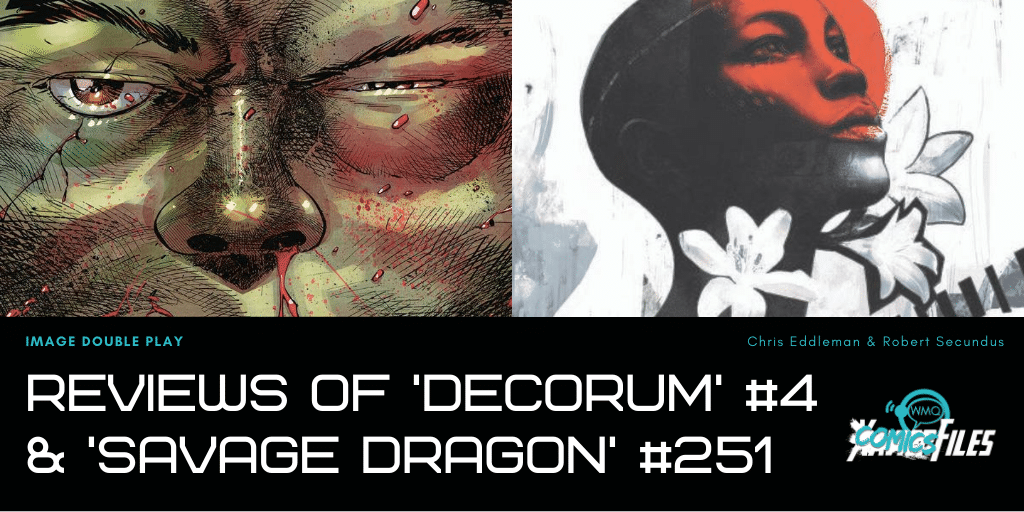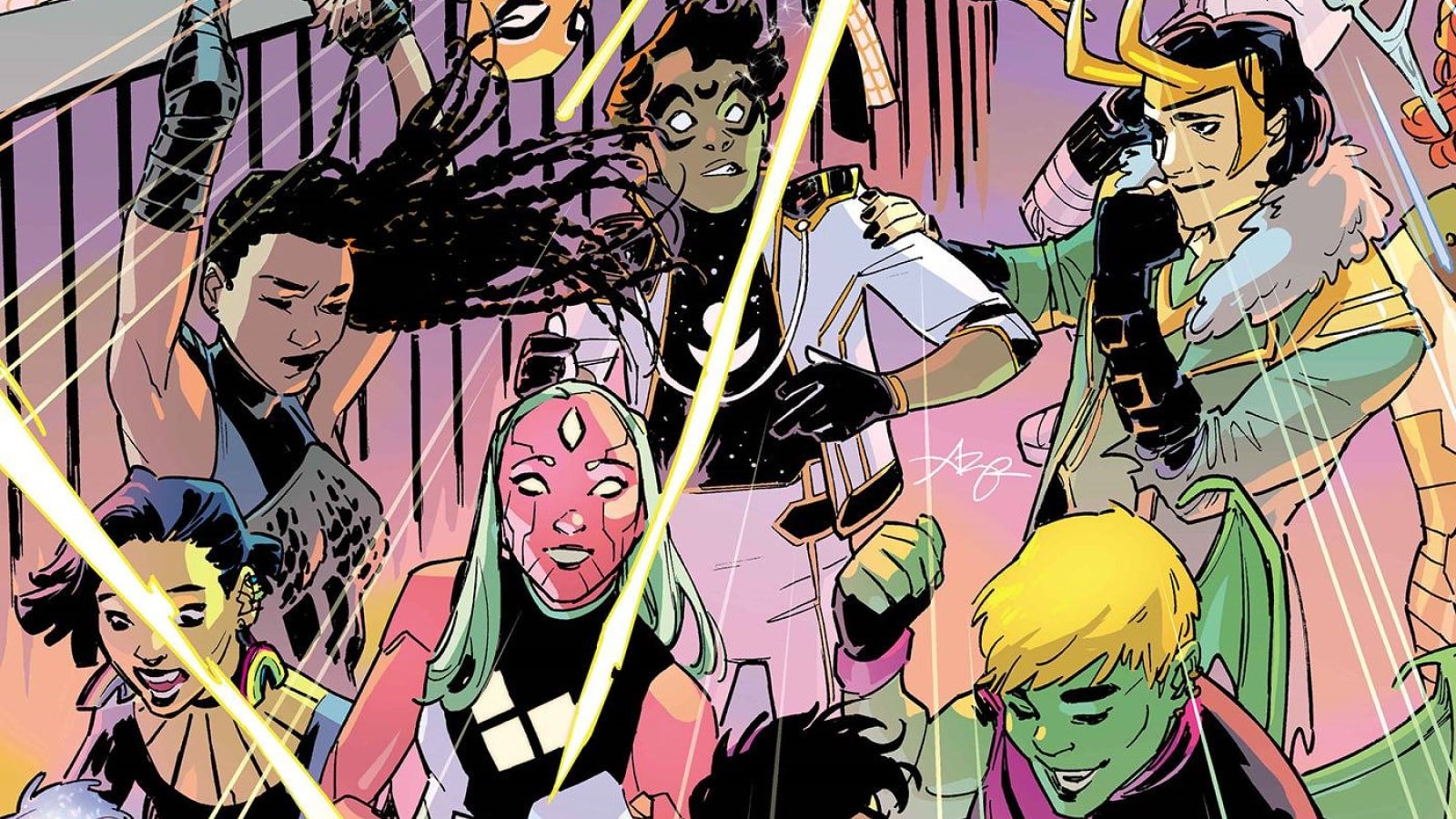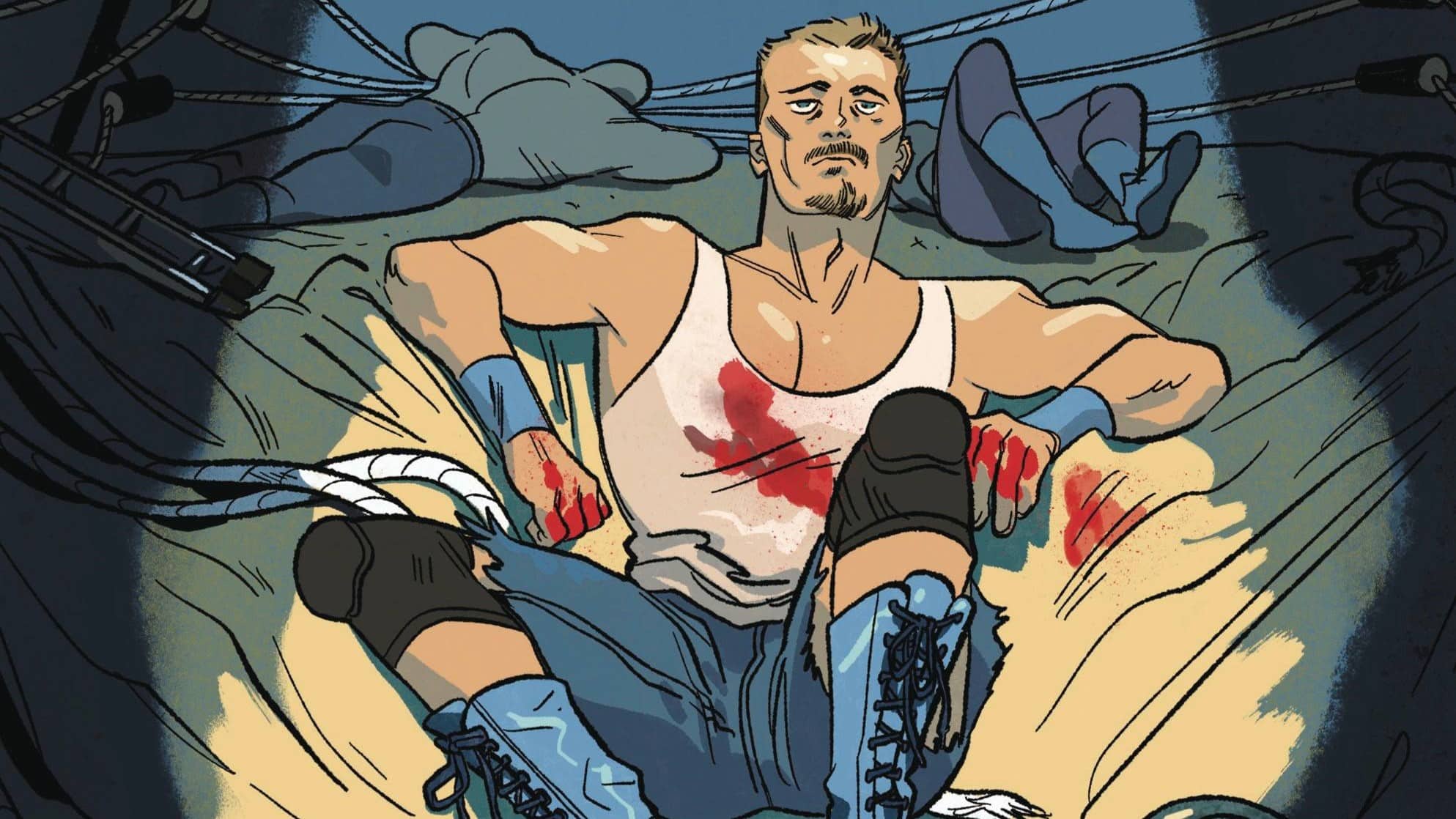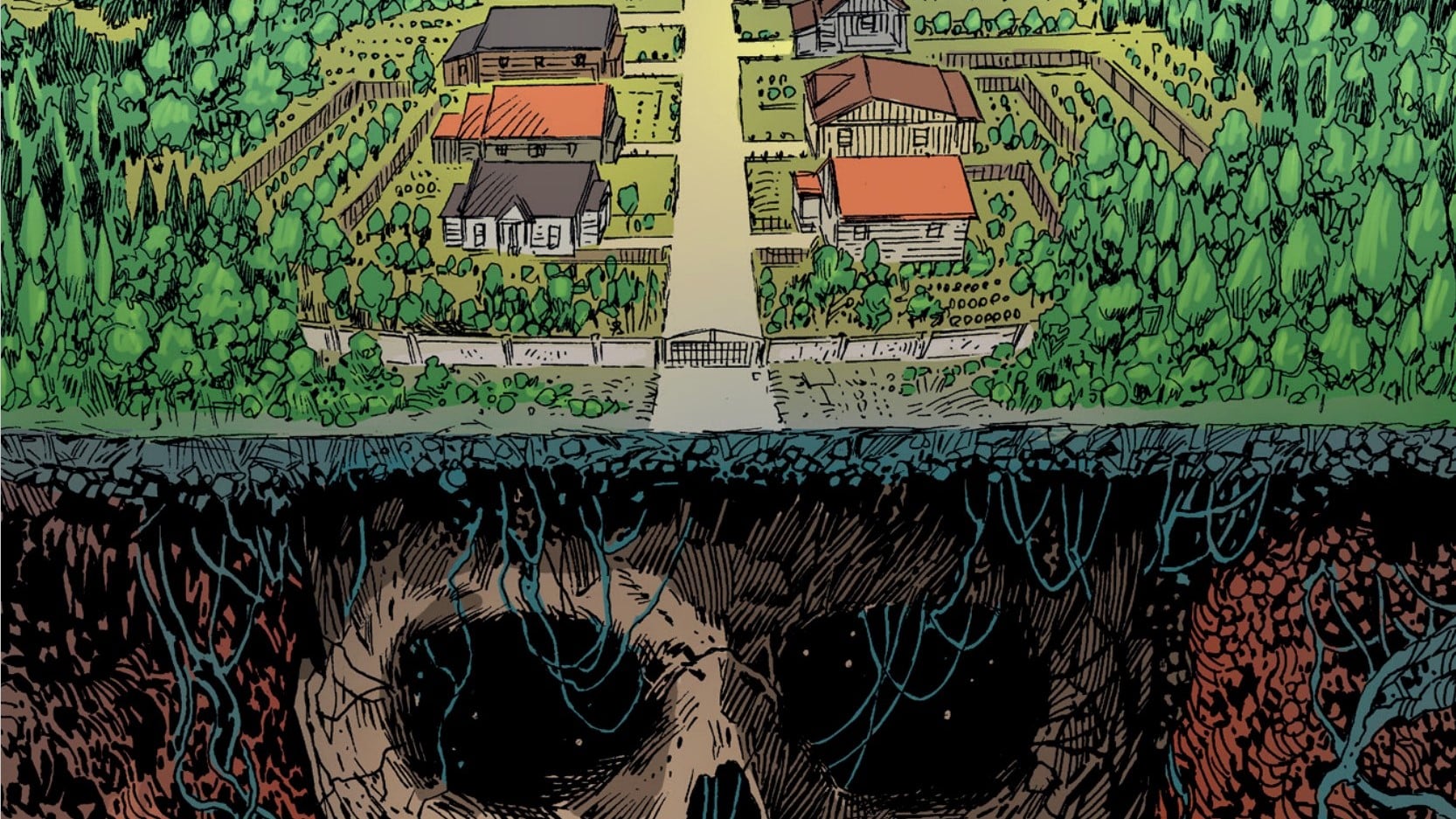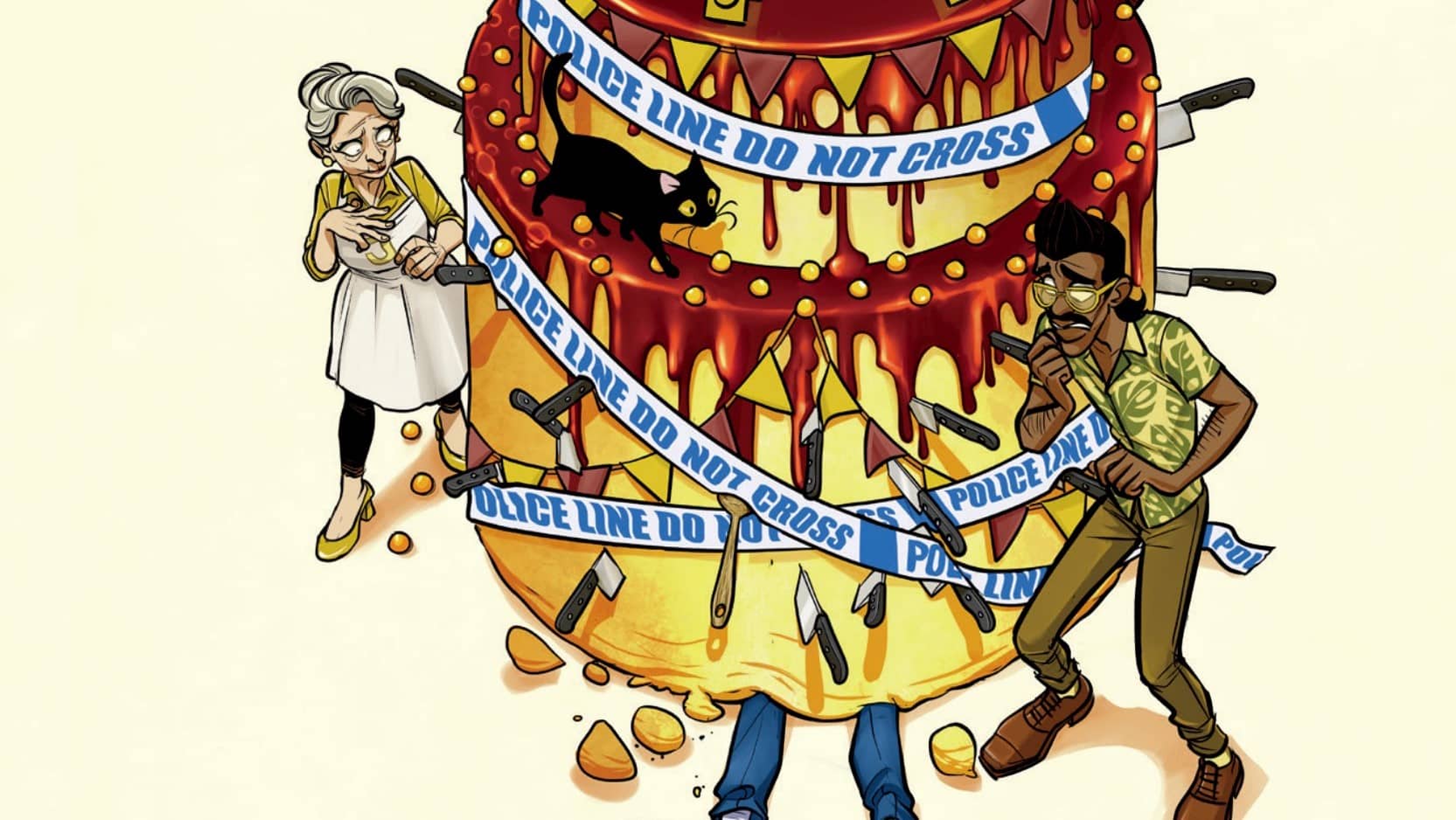This week, the indie arm of Xavier Files brings you reviews of Decorum #4, courtesy of Chris Eddleman, and Savage Dragon #251, courtesy of Robert Secundus. Enjoy!
Decorum #4
Writer: Jonathan Hickman, Artist: Mike Huddleston, Colorist: Sasha E. Head, Letterer: Rus Wooton, Publisher: Image

Decorum has been an interesting journey through the world created within, as well as through the mind of its creators. Jonathan Hickman and Mike Huddleston have crafted an incredibly unique universe, and I do mean universe. This isn’t the first time we’ve gotten expansive space opera from Hickman (surely we all read that Top Cow one-shot?) but it’s clearly one of his favorite playgrounds.
I wasn’t immediately swayed by Decorum, with the first issue playing prologue and chapter one, and giving me not quite enough of either, but by issue #3 I was pretty set as we finally settled into the story going forward. But then issue #4 hit, and I had to sort of meander through my thoughts on it. The A story (A is for Assassin) has been put on the backburner for the time being, while our B story (which will inevitably crash into the A story) has moved to the forefront.
While I was a bit excited to see the Sisterhood of Man again, this interlude was incredible. We’ve been getting snippets throughout the last few issues that a group of nunlike women called the Celestial Mothers have been trying to create a cosmic Messiah, while the machinery laden Church of the Singularity pursues them relentlessly, seeing the possibility of said Messiah as an affront.
There are some familiar themes from Jonathan Hickman, a man who seems quite at home exploring mankind, transhumanism and malevolent machine supremacy. It’s interesting how he makes it very clear that the AI, the ordered beings, are very dogmatic in their actions, acting according to programming like church fundamentalists. In contrast, the Celestial Mothers are a bit more messy, while one of their members scoffs at their traditional rules. The Church is unyielding, while the rebellious mothers adapt and break rules.
So we get the chase, the escape, the plan, it’s a nicely written issue and it shows that Hickman knows how to sidestep and let his co-creators shine through. That being said, the words take a backseat to the incredibly crafted scenes by Huddleston. He plays with some great recurring motifs with this design of the various individuals. While the people of the Church of the Singularity exist in jagged geometric shapes and sinister nanoswarms, the Celestial Mothers exist in smooth robes and swirling fractals. Huddleston tells a story simply with incredible colors and shapes, and beautiful page layouts that play with comic structure, often eschewing traditional bordered panels in service of freeform pages that tell a story that feels big and expansive.
I have to commend Sasha E. Head’s design work, giving us those Hickman Essential graphs in great detail, with a very intricate graph of how the Church tracks the Celestial Egg from a single drop of fluid. We also get more of her planetary pages as we move from location to location, which delights the space opera nut in me.
Rus Wooton brings delightful lettering as well, crafting shaky letters and asymmetrical balloons that add to the high strangeness of this universe.
If I had to nitpick, this story is moving a little slowly for my liking, as the pieces are being set for further development. That’s not unheard of for Hickman, and the other creators are bringing their A game to the extent that as long as I have these beautiful pages (at 44, it’s some real bang for your buck) to gaze at, I’m along for the ride.
Savage Dragon #251
Created by: Erik Larsen; Colorist: Nikos Koutsis, Flats: Mike Toris, Letterer: Ferran Delgado, Publisher: Image

Savage Dragon #250 was like staring into a horrifying, horny abyss. I decided to give the comic another go; maybe a normal-sized issue, I thought, would help me get the series.
And it did!
Maybe it’s because I’ve already gone through the immense breadth of content that #250 had to offer, and so I’ve already been introduced to the basics of the series, or maybe it’s because a normal-sized issue is always necessarily less overwhelming than an oversized anniversary, but I found Savage Dragon #251 incredibly clear (though still complicated). It’s a great window into this extremely strange, long-lived story.
At the conclusion of #250, our titular dragon was confronted by his dead father. In the opening pages of #251, we learn that this isn’t exactly Savage Dragon Sr., but an alternate universe Sr. who gained the memories of the dead dad after the Savage Dragon multiverse went through a Crisis event, and all worlds were collapsed into one. This didn’t just affect the heroes: Every human being on Earth now, it seems, has memories of alternate selves that no longer exist.
Alt-Sr. doesn’t enter Jr.’s apartment to talk, because, well, every human being on Earth is also dealing with COVID-19. And that’s buckwild, that this comic can treat a multiversal Crisis event and our own actual pandemic with the same gravity and at the same time, in such a way that both actually feel appropriate for this universe (though I’m not sure they’re treated in such a way that the conjunction feels perfectly tasteful).
Outdoors, son and alternate-father catch up, and it’s the kind of conversation that can only happen in a superhero sci-fi universe, but it also, like the best of superhero soap opera moments, invokes so many relatable moments, relatable feelings: It’s a conversation between a son who thought he had lost his dad forever and discovered that he was, in some way, saved; and a dad discovering his son that he never knew, now an adult. It’s a conversation between two people who want some kind of connection but don’t know if they can ever really achieve that connection, or even trust each other. And this conversation lands even harder here for Savage Dragon’s devotion to moving characters forward in real time. These are characters (or versions of characters) that have aged alongside their readers. Children who read Savage Dragon when it began are now the age of the title character. They’ve become adults alongside their superheroes. And many have also likely lost or grown estranged from their parents. There’s a weight here that could not be achieved with a sliding timeline.
And that’s beautiful. It’s beautiful that there’s a comic that can so easily blend our own real world anxieties and crises and dramas and emotions with the exponential stakes of a superhero reality.
But that beauty exists alongside scenes where, for example, children beg their mother to stop having so much sex with their father because they can’t even finish one board game with him before they’re interrupted, and scenes where a wife, mid-coitus, suggests to her husband that they have a threesome with his own father, and the husband has an enraged orgasm of such extreme force that his ejaculate blasts his wife to their ceiling, and that, I think, sums up what Savage Dragon is at the present time.

